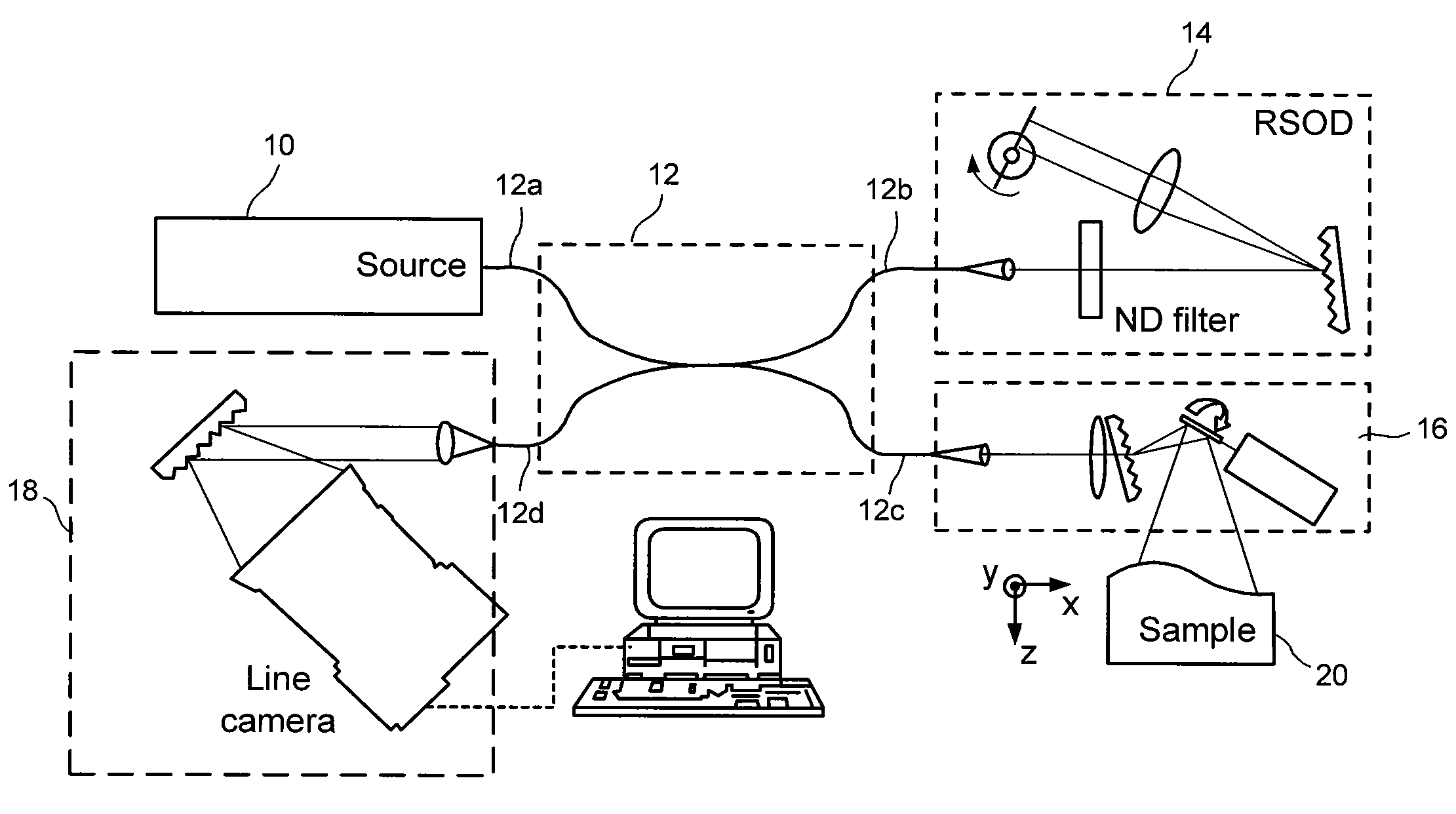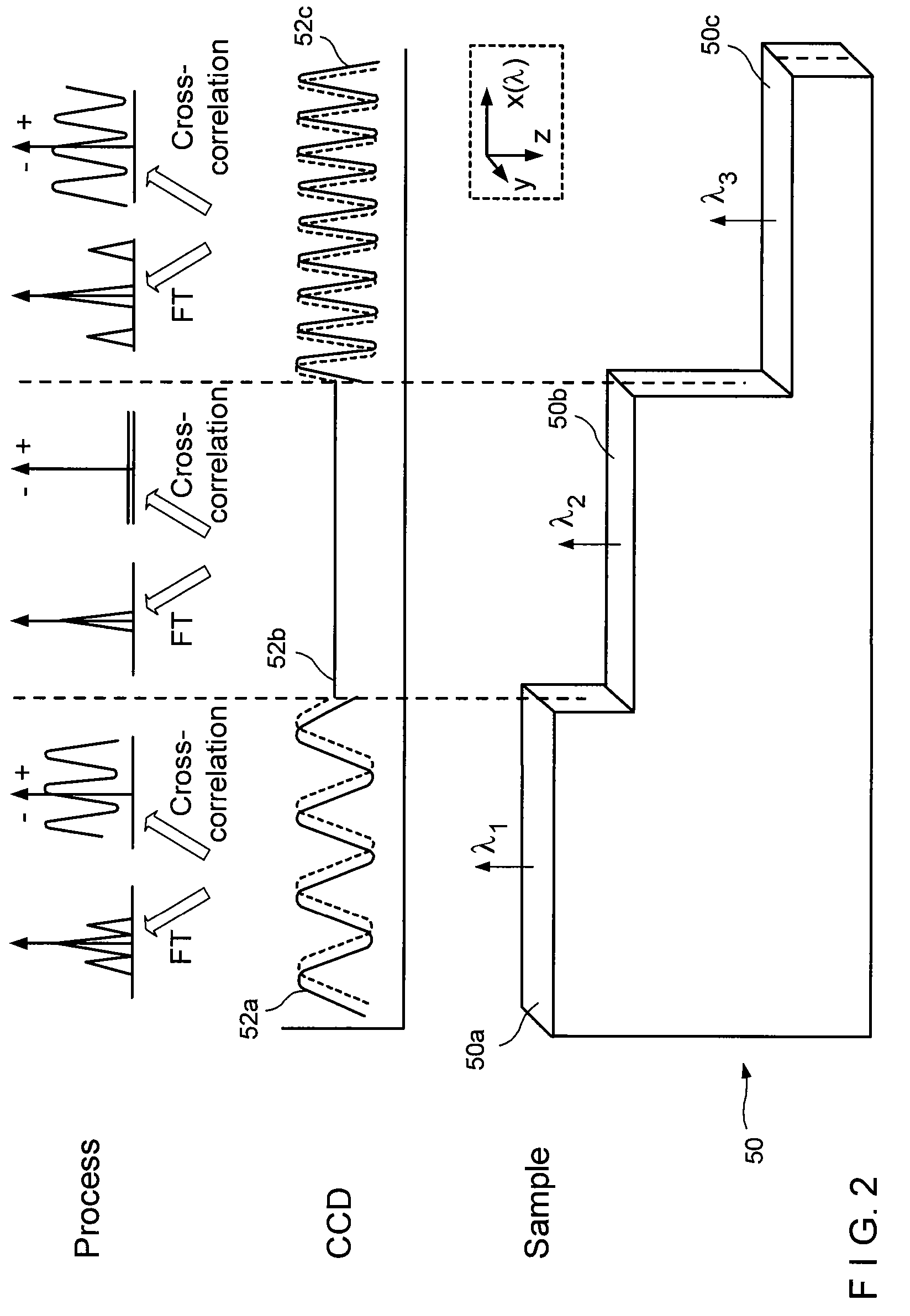Systems and methods for generating data based on one or more spectrally-encoded endoscopy techniques
a technology of generating data and endoscopy, applied in the field of system and method for generating data, can solve the problems of difficult depth resolution imaging with a large three-dimensional field of view, increased size, cost, complexity of such devices, etc., to achieve the effect of facilitating high-speed imaging, removing height ambiguity, and improving snr
- Summary
- Abstract
- Description
- Claims
- Application Information
AI Technical Summary
Benefits of technology
Problems solved by technology
Method used
Image
Examples
Embodiment Construction
[0055]FIG. 1 shows a block diagram of an exemplary embodiment of a system according to the present invention for spectral-domain spectrally-encoded endoscopy (“SD-SEE”). This exemplary system includes a light source 10 coupled to a first port 12a of a single-mode fiber optic interferometer 12. In one exemplary embodiment, the light source 10 may be, for example, a broad-bandwidth titanium-sapphire laser of the type manufactured by, e.g., Femtolasers Produktions, GmbH, Femtosource integral OCT™, with a center wavelength of about 800 nanometers (nm) and an FWHM bandwidth of about 140 nm. Further, according to another exemplary embodiment, the interferometer 12 may be a 50 / 50 Michelson interferometer.
[0056]A second port 12b of the interferometer 12 of the system of FIG. 1 can be coupled to a reference arm which may include, e.g., an arrangement for adjusting or otherwise controlling a path length 14 coupled thereto. A third port 12c of the interferometer 12 can be coupled to a sample a...
PUM
| Property | Measurement | Unit |
|---|---|---|
| phase-sensitive depth measurement | aaaaa | aaaaa |
| FWHM bandwidth | aaaaa | aaaaa |
| FWHM bandwidth | aaaaa | aaaaa |
Abstract
Description
Claims
Application Information
 Login to View More
Login to View More - R&D
- Intellectual Property
- Life Sciences
- Materials
- Tech Scout
- Unparalleled Data Quality
- Higher Quality Content
- 60% Fewer Hallucinations
Browse by: Latest US Patents, China's latest patents, Technical Efficacy Thesaurus, Application Domain, Technology Topic, Popular Technical Reports.
© 2025 PatSnap. All rights reserved.Legal|Privacy policy|Modern Slavery Act Transparency Statement|Sitemap|About US| Contact US: help@patsnap.com



